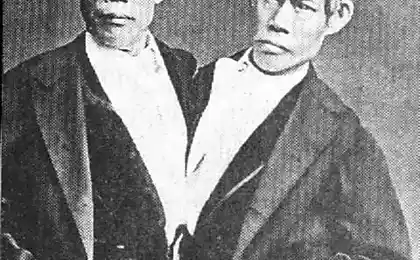695
How did we get here: a brief history of capitalism
Six million two hundred fifty two thousand four hundred twenty six
The Rhodes Colossus Striding from Cape Town to Cairo, 1892
Capitalism is just one of the existing world socio-economic formations. The history of its formation is associated with such phenomena as colonial expansion and exploitation of workers, whose 80-hour working week became the norm.
The economy of Western Europe had indeed grown slowly... Capitalism originated in Western Europe, particularly in great Britain and the Benelux countries (which are today Belgium, the Netherlands and Luxembourg), in the XVI–XVIIвеках. Why he was born there and not in, say, China or India that were comparable with Western Europe in terms of economic development, is the subject of intensive and lengthy discussions. As an explanation was offered everything from contempt experienced by the Chinese elite for practical training (such as trade and industry), to map coal fields of great Britain and of the fact of the discovery of America. Not going to talk about this debate. Take as a given that capitalism began to develop in Western Europe. Eighty three million seven hundred seventy three thousand eighty
Ha-Joon Chang, "How does the economy?"Prior to his appearance in Western European societies, like all others in the pre-capitalist era, changed very slowly. People were largely organized around agriculture, which for many centuries was used almost the same technology with a limited degree of Commerce and handicraft production.
Between X and XV centuries, i.e. during the Medieval era, the income per capita increased by 0.12 per cent a year. Hence, the income in 1500 was only 82 percent higher than 1000 m. For comparison, this is the value that China, with its 11 percent annual growth rate achieved in the six years between 2002 and 2008. It follows that from the point of view of material progress one year in China today is equivalent to 83 years in medieval Western Europe (for this time, could be born and die three people in the middle Ages the average life expectancy was only 24 years old).
...but still faster than any other country in the world Despite the above, economic growth in Western Europe is still far ahead of the same rate in countries of Asia and Eastern Europe (including Russia), which are estimated to grow three times slower (0.04%). This means that for 500 years the incomes of the local population became higher by only 22 percent. If Western Europe was moving like a turtle, whereas others resembled snails. Capitalism appeared "in slow motion" of Capitalism appeared in the XVI century. But his distribution was so slow that it is impossible to determine the exact date of his birth. In the period between 1500 and 1820 the growth rate of income per capita in Western Europe still accounted for 0.14 percent — in fact, he was the same as in the middle Ages (0.12 per cent). In the UK and the Netherlands, the accelerated growth of this indicator was observed in the late XVIII century, especially in the sectors of production of cotton textiles and ferrous metals. As a result, from 1500 to 1820 the UK and the Netherlands achieved rates of economic growth per capita in 0.27 and 0.28 percent respectively. And although by modern standards these figures are very small, they are twice the Western European average figure. This has led to a number of changes. The beginning of colonial expansion Since the beginning of the XV century Western Europe began to rapidly expand. Call for decency the era of Great geographical discoveries, the expansion included the expropriation of land and resources and the enslavement of the indigenous population through the establishment of the colonial regime.
Starting with Portugal in Asia and Spain in North and South America, from the end of XV century Western European peoples began to ruthlessly conquer new lands. By the mid-eighteenth century North America was divided between Britain, France and Spain. Most of the countries of South America were ruled by Spain and Portugal to 1810– 1820-ies. Part of India was under British rule (mainly the Bengal and Bihar), French (South-East coast) and Portuguese (various coastal areas, particularly Goa). About this time begins the colonization of Australia (the first penal colony there in 1788). Africa at that time was "mastered" not so good, there were located only a small settlement of the Portuguese (the previously uninhabited Islands of Cape Verde, Sao Tome and Principe) and the Dutch (Cape town, founded in the XVII century). Francis Hayman. Robert Clive meets with Mir Jafar after the battle of plassey. 1757 Colonialism was based on capitalist principles. It is symbolic that before 1858, British rule in India was carried out by a Corporation (East India company), not by the government. These colonies brought new resources to Europe. Initially, the expansion was motivated by the search for precious metals to use as money (gold and silver) and spices (especially black pepper). Over time, new colonies were created plantations, particularly in the USA, Brazil and the Caribbean, where was used the labor of slaves, mostly taken from Africa. Plantations were established, to grow and to deliver to Europe new crops, such as sugarcane, rubber, cotton and tobacco. It is impossible to imagine a time when Britain had the traditional chips, Italy — tomatoes and polenta (made from corn), and in India, Thailand, and Korea didn't know what is Chile. Colonialism leaves deep scars for many years a subject of debate has developed in the XVI–XVIII centuries, capitalism without the colonial resources: precious metals used as money, the new foodstuffs, such as potatoes and sugar, and raw materials for industrial production, such as cotton. Although there is no doubt that the colonialists have benefited from their sales, most likely in the European countries, capitalism has developed without them. While colonialism is, without a doubt, ravaged the colonized society.
The indigenous population was exterminated or brought to the brink of extinction, and earth, with all resources selected. Marginalization of the local people was so deep that Evo Morales, the current President of Bolivia, elected in 2006, only the second head of state on the American continent — the native of the indigenous population, who came to power from the moment Europeans arrived in 1492 (the first was Benito Juarez, President of Mexico 1858-1872).
A lot of Africans — the General feeling is that about 12 million — was captured into slavery and exported to Europe and the Arab countries. It is not only a tragedy for those who lost their freedom (and even if they managed to survive a difficult journey), but also depleted many African companies and destroyed their social structure. The territory acquired of arbitrary boundaries — this fact affects the internal and international policy of some countries to this day. The fact that in Africa as many international borders are a straight line, is obvious proof to this, since natural boundaries are never straight lines, they usually are along the rivers, mountain ranges and other geographic features. Colonialism often meant the deliberate termination of an existing industrial activity in the economically developed regions. For example, in 1700, Britain banned the import of Indian chintz (we mentioned this in Chapter 2) to contribute to the development of its own production, thus it has dealt a severe blow to the Indian cotton industry. The industry was completely destroyed in the middle of the XIX century the flow of imported fabrics, at that time already produced in Britain in a mechanized way. As a colony, India could not apply the tariffs and to take other policy measures to protect their producers from the British import. In 1835 Lord Bentinck, the Governor General of the East India company, famously said: "the Plains of India whiten the bones of the weavers". The start of the industrial revolution Capitalism is really taking off around 1820 throughout Western Europe and later European colonies in North America and Oceania. The acceleration of economic growth was so dramatic that the next half a century after 1820, became known as the industrial revolution. Over the course of fifty years, the income per capita in Western Europe rose 1 percent, which is quite small by modern standards (in Japan it was observed that an increase in income during the so-called lost decade of the 1990s years), as compared to a growth rate of 0.14 percent increase between 1500 and 1820, it was a real turbojet acceleration. The 80-hour work week: the suffering of some people has only grown However, this acceleration of growth of income per capita initially, many were accompanied by declining living standards. A lot of people whose skills have become obsolete — for example, artisans, producing textiles, — lost their jobs because they were replaced by machines operated by cheaper, unskilled workers, many of whom were children. Some machines are even designed for growing children. People hired in factories or in small workshops supplying them raw materials, worked many 70-80 hours a week was the norm, someone worked more than 100 hours a week and for the rest is usually allocated only half a day on Sunday.
Working conditions were extremely dangerous. Many English workers for the cotton industry died from lung disease due to dust generated in the production process. The urban working class lived in very strained circumstances, sometimes in the room, huddled on 15-20. Was considered quite normal that hundreds of people use one toilet. People were dying like flies. In poor areas of Manchester, the life expectancy was 17 years, which is 30 percent below the average level across great Britain till the Norman conquest that occurred in 1066 (when the life expectancy was 24 years).
The myth of the free market and free trade: how it really developed capitalism the Development of capitalism in Western Europe and their colonies in the nineteenth century is often associated with the proliferation of free trade and freemarket. It is considered that the governments of these States levied taxes and does not limit international trade (referred to as free trade) and generally did not interfere in the functioning of the market (the free market). This state of Affairs has led to the fact that these countries failed to develop capitalism. It is also assumed that the UK and the USA was the leader among the other States because the first adopted the free market and free trade.
This statement is too far from the truth. The government played a leading role at the initial stage of development of capitalism both in the UK and in the USA and other countries of Western Europe. Free trade spreads mostly by far from freedom means Although free trade was not the cause of capitalism, it really spread throughout the nineteenth century. Partially it manifested itself in the heart of the capitalist world 1860-ies, when the United Kingdom adopted this principle and has signed bilateral free trade agreements (FTAs), in which both sides have lifted the restrictions on import and customs duties for export together with the States of Western Europe. But most of all, she is spread on the periphery of capitalism — in Latin America and Asia, and due to the fact that nobody associates with the word "free" — the use of force or at least threat of use. Colonization was the most obvious way for the spread of the "unfree free trade", but even the many countries fortunate enough not to become colonies, also had to accept it. Methods "gunboat diplomacy" forced them to sign unequal treaties that deprived them of, among other things, tariff autonomy (the right to set their own rates). They were allowed to use only a low single tariff rate (3-5 percent) is sufficient to raise some government revenue, but too small to protect fledgling industries. The most infamous of such facts is considered to be the Nanjing Treaty which China had to sign in 1842, after the defeat in the First opium war. But unequal treaties also began to subscribe with Latin America until they became independent in 1810-1820th years. Between 1820 and 1850 several other States, too, were forced to sign such contracts: the Ottoman Empire (predecessor of Turkey), Persia (today's Iran), Siam (today's Thailand) and even Japan. The term Latin American unequal treaties expired in 1870-1880-ies, while the treaties with Asian countries and act in the XX century.
This statement is too far from the truth. The government played a leading role at the initial stage of development of capitalism both in the UK and in the USA and other countries of Western Europe.
The inability to protect and defend the young branches of industry, whether as a result of direct colonial rule or unequal treaties, significantly contributed to the economic regression of the countries of Asia and Latin America in the period: there was observed a negative growth of income per capita (with a speed and -0,1 -0,04% per year, respectively). Capitalism switched into high gear: the beginning of mass production the Development of capitalism began to accelerate around 1870. Between 1860 and 1910 came the clusters of new technological innovations, the result of which began the rise of the so-called heavy and chemical industry: manufacture of electrical equipment, internal combustion engines, synthetic dyes, artificial fertilizers and other products. Unlike technologies of the industrial revolution, invented by practical men with good intuition, a new technology was developed in the framework of the systematic application of scientific and engineering principles. Thus, any invention very quickly can be reproduced and improved.
In addition, the organization of the production process in many industries has undergone a revolution thanks to the invention of a system of mass production. Thanks to the introduction of the moving Assembly line (belt conveyor) and interchangeable parts drastically decreased costs. Nowadays it is the main (almost universally used) the system, despite frequent statements about its demise, sounding since 1908. New economic institutions emerged to manage the growing scale of production At its peak, capitalism has acquired a major institutional structure that exists today; it includes limited liability, bankruptcy laws, Central Bank, social security, labor legislation and much more. These institutional changes occurred mainly due to changes in underlying technologies and politics.
In connection with the growing need for large-scale investments, the principle of limited liability, which applied only to privileged companies, is widespread. Therefore, now it can be used by any company fulfilling certain minimum conditions. Having access to an unprecedented scope of investment, the limited liability company became the most powerful means of the development of capitalism. Karl Marx, who recognized their huge potential before any ardent supporter of capitalism, called it "capitalist production in its highest development".
Before the British reform of 1849, the essence of the bankruptcy law was the punishment of the insolvent businessman in the worst case the debt prison. New laws introduced in the second half of the XIX century, gave the victim failed entrepreneurs a second chance, allowing not to pay interest to creditors during the reorganization of its business (in accordance with Chapter 11 of the Federal bankruptcy law of the United States, introduced in 1898) and forcing the latter to write off part of the debt. Now to do business was not so risky. With the increasing size of companies began to enlarge and banks. At that time there was a risk that one Bank failure could destabilize the entire financial system, so to combat this problem was created by the Central banks acting as lender of last resort — and the first in 1844 became the Bank of England.
Because of the wide spread of socialist agitation and increase pressure on the government from the reformists on the situation of the working class since the 1870-ies was introduced a number of laws on social security and work: the accident insurance, health insurance, old age pensions and insurance against unemployment. Many countries have banned the labour of young children (typically aged 10-12 years) and limited number of working hours for older children (originally only up to 12 hours). The new laws also regulate the time and conditions of work for women. Unfortunately, this was not done out of chivalrous motives, but because of the arrogant attitude to the weaker sex. It was believed that, unlike men, women lacked the mental abilities, so they can sign the unprofitable contract of employment, in other words, women needed protecting from themselves. The laws on social security and labour smoothed the roughest facets of capitalism and made the lives of many poor people is better — albeit at first quite a bit.
Institutional changes contributed to the economic growth. The limited liability company and loyal to the debtors, the bankruptcy laws reduced the risk associated with entrepreneurial activity, thereby encouraging wealth creation. The activity of the Central Bank, on the one hand, and laws on social security and labour on the other, also contributed to the growth by increasing the economic and political stability, increased investment, and hence to accelerate further economic recovery. The growth rate of income per capita in Western Europe grew from 1 percent a year during the peak period 1820-1870 years to 1.3 per cent during 1870-1913 years. With the increasing size of companies began to enlarge and banks. At that time there was a risk that one Bank failure could destabilize the entire financial system, so to combat this problem was created by the Central banks acting as lender of last resort — and the first in 1844 became the Bank of England.
Because of the wide spread of socialist agitation and increase pressure on the government from the reformists on the situation of the working class since the 1870-ies was introduced a number of laws on social security and work: the accident insurance, health insurance, old age pensions and insurance against unemployment. Many countries have banned the labour of young children (typically aged 10-12 years) and limited number of working hours for older children (originally only up to 12 hours). The new laws also regulate the time and conditions of work for women. Unfortunately, this was not done out of chivalrous motives, but because of the arrogant attitude to the weaker sex. It was believed that, unlike men, women lacked the mental abilities, so they can sign the unprofitable contract of employment, in other words, women needed protecting from themselves. The laws on social security and labour smoothed the roughest facets of capitalism and made the lives of many poor people is better — albeit at first quite a bit.
Institutional changes contributed to the economic growth. The limited liability company and loyal to the debtors, the bankruptcy laws reduced the risk associated with entrepreneurial activity, thereby encouraging wealth creation. The activity of the Central Bank, on the one hand, and laws on social security and labour on the other, also contributed to the growth by increasing the economic and political stability, increased investment, and hence to accelerate further economic recovery. The growth rate of income per capita in Western Europe grew from 1 percent a year during the peak period 1820-1870 years to 1.3 per cent during 1870-1913 years.
It turns out that "liberal" the Golden age was not so liberal the Peak of development of capitalism is often called the infancy of globalization: for the first time the whole world economy was integrated into a single system of production and exchange. Many commentators blamed this on the expense of liberal economic policy adopted in the period when there was quite a bit of political restrictions on the interstate movement of goods, capital and people. Such liberalism on the international stage consistent with the approach of non-interference in domestic economic policy (below the sidebar for an explanation of these concepts). It is considered that the provision of maximum freedom for business, the desire for a balanced budget (in which public spending does not exceed tax revenues) and the adoption of the gold standard were key factors. In fact, everything was much more difficult. Book excerpt from Cambridge economist Ha-Joon Chang, "How does the economy?"which was recently released in the publishing house "MYTH". published
Source: theoryandpractice.ru
The Rhodes Colossus Striding from Cape Town to Cairo, 1892
Capitalism is just one of the existing world socio-economic formations. The history of its formation is associated with such phenomena as colonial expansion and exploitation of workers, whose 80-hour working week became the norm.
The economy of Western Europe had indeed grown slowly... Capitalism originated in Western Europe, particularly in great Britain and the Benelux countries (which are today Belgium, the Netherlands and Luxembourg), in the XVI–XVIIвеках. Why he was born there and not in, say, China or India that were comparable with Western Europe in terms of economic development, is the subject of intensive and lengthy discussions. As an explanation was offered everything from contempt experienced by the Chinese elite for practical training (such as trade and industry), to map coal fields of great Britain and of the fact of the discovery of America. Not going to talk about this debate. Take as a given that capitalism began to develop in Western Europe. Eighty three million seven hundred seventy three thousand eighty
Ha-Joon Chang, "How does the economy?"Prior to his appearance in Western European societies, like all others in the pre-capitalist era, changed very slowly. People were largely organized around agriculture, which for many centuries was used almost the same technology with a limited degree of Commerce and handicraft production.
Between X and XV centuries, i.e. during the Medieval era, the income per capita increased by 0.12 per cent a year. Hence, the income in 1500 was only 82 percent higher than 1000 m. For comparison, this is the value that China, with its 11 percent annual growth rate achieved in the six years between 2002 and 2008. It follows that from the point of view of material progress one year in China today is equivalent to 83 years in medieval Western Europe (for this time, could be born and die three people in the middle Ages the average life expectancy was only 24 years old).
...but still faster than any other country in the world Despite the above, economic growth in Western Europe is still far ahead of the same rate in countries of Asia and Eastern Europe (including Russia), which are estimated to grow three times slower (0.04%). This means that for 500 years the incomes of the local population became higher by only 22 percent. If Western Europe was moving like a turtle, whereas others resembled snails. Capitalism appeared "in slow motion" of Capitalism appeared in the XVI century. But his distribution was so slow that it is impossible to determine the exact date of his birth. In the period between 1500 and 1820 the growth rate of income per capita in Western Europe still accounted for 0.14 percent — in fact, he was the same as in the middle Ages (0.12 per cent). In the UK and the Netherlands, the accelerated growth of this indicator was observed in the late XVIII century, especially in the sectors of production of cotton textiles and ferrous metals. As a result, from 1500 to 1820 the UK and the Netherlands achieved rates of economic growth per capita in 0.27 and 0.28 percent respectively. And although by modern standards these figures are very small, they are twice the Western European average figure. This has led to a number of changes. The beginning of colonial expansion Since the beginning of the XV century Western Europe began to rapidly expand. Call for decency the era of Great geographical discoveries, the expansion included the expropriation of land and resources and the enslavement of the indigenous population through the establishment of the colonial regime.
Starting with Portugal in Asia and Spain in North and South America, from the end of XV century Western European peoples began to ruthlessly conquer new lands. By the mid-eighteenth century North America was divided between Britain, France and Spain. Most of the countries of South America were ruled by Spain and Portugal to 1810– 1820-ies. Part of India was under British rule (mainly the Bengal and Bihar), French (South-East coast) and Portuguese (various coastal areas, particularly Goa). About this time begins the colonization of Australia (the first penal colony there in 1788). Africa at that time was "mastered" not so good, there were located only a small settlement of the Portuguese (the previously uninhabited Islands of Cape Verde, Sao Tome and Principe) and the Dutch (Cape town, founded in the XVII century). Francis Hayman. Robert Clive meets with Mir Jafar after the battle of plassey. 1757 Colonialism was based on capitalist principles. It is symbolic that before 1858, British rule in India was carried out by a Corporation (East India company), not by the government. These colonies brought new resources to Europe. Initially, the expansion was motivated by the search for precious metals to use as money (gold and silver) and spices (especially black pepper). Over time, new colonies were created plantations, particularly in the USA, Brazil and the Caribbean, where was used the labor of slaves, mostly taken from Africa. Plantations were established, to grow and to deliver to Europe new crops, such as sugarcane, rubber, cotton and tobacco. It is impossible to imagine a time when Britain had the traditional chips, Italy — tomatoes and polenta (made from corn), and in India, Thailand, and Korea didn't know what is Chile. Colonialism leaves deep scars for many years a subject of debate has developed in the XVI–XVIII centuries, capitalism without the colonial resources: precious metals used as money, the new foodstuffs, such as potatoes and sugar, and raw materials for industrial production, such as cotton. Although there is no doubt that the colonialists have benefited from their sales, most likely in the European countries, capitalism has developed without them. While colonialism is, without a doubt, ravaged the colonized society.
The indigenous population was exterminated or brought to the brink of extinction, and earth, with all resources selected. Marginalization of the local people was so deep that Evo Morales, the current President of Bolivia, elected in 2006, only the second head of state on the American continent — the native of the indigenous population, who came to power from the moment Europeans arrived in 1492 (the first was Benito Juarez, President of Mexico 1858-1872).
A lot of Africans — the General feeling is that about 12 million — was captured into slavery and exported to Europe and the Arab countries. It is not only a tragedy for those who lost their freedom (and even if they managed to survive a difficult journey), but also depleted many African companies and destroyed their social structure. The territory acquired of arbitrary boundaries — this fact affects the internal and international policy of some countries to this day. The fact that in Africa as many international borders are a straight line, is obvious proof to this, since natural boundaries are never straight lines, they usually are along the rivers, mountain ranges and other geographic features. Colonialism often meant the deliberate termination of an existing industrial activity in the economically developed regions. For example, in 1700, Britain banned the import of Indian chintz (we mentioned this in Chapter 2) to contribute to the development of its own production, thus it has dealt a severe blow to the Indian cotton industry. The industry was completely destroyed in the middle of the XIX century the flow of imported fabrics, at that time already produced in Britain in a mechanized way. As a colony, India could not apply the tariffs and to take other policy measures to protect their producers from the British import. In 1835 Lord Bentinck, the Governor General of the East India company, famously said: "the Plains of India whiten the bones of the weavers". The start of the industrial revolution Capitalism is really taking off around 1820 throughout Western Europe and later European colonies in North America and Oceania. The acceleration of economic growth was so dramatic that the next half a century after 1820, became known as the industrial revolution. Over the course of fifty years, the income per capita in Western Europe rose 1 percent, which is quite small by modern standards (in Japan it was observed that an increase in income during the so-called lost decade of the 1990s years), as compared to a growth rate of 0.14 percent increase between 1500 and 1820, it was a real turbojet acceleration. The 80-hour work week: the suffering of some people has only grown However, this acceleration of growth of income per capita initially, many were accompanied by declining living standards. A lot of people whose skills have become obsolete — for example, artisans, producing textiles, — lost their jobs because they were replaced by machines operated by cheaper, unskilled workers, many of whom were children. Some machines are even designed for growing children. People hired in factories or in small workshops supplying them raw materials, worked many 70-80 hours a week was the norm, someone worked more than 100 hours a week and for the rest is usually allocated only half a day on Sunday.
Working conditions were extremely dangerous. Many English workers for the cotton industry died from lung disease due to dust generated in the production process. The urban working class lived in very strained circumstances, sometimes in the room, huddled on 15-20. Was considered quite normal that hundreds of people use one toilet. People were dying like flies. In poor areas of Manchester, the life expectancy was 17 years, which is 30 percent below the average level across great Britain till the Norman conquest that occurred in 1066 (when the life expectancy was 24 years).
The myth of the free market and free trade: how it really developed capitalism the Development of capitalism in Western Europe and their colonies in the nineteenth century is often associated with the proliferation of free trade and freemarket. It is considered that the governments of these States levied taxes and does not limit international trade (referred to as free trade) and generally did not interfere in the functioning of the market (the free market). This state of Affairs has led to the fact that these countries failed to develop capitalism. It is also assumed that the UK and the USA was the leader among the other States because the first adopted the free market and free trade.
This statement is too far from the truth. The government played a leading role at the initial stage of development of capitalism both in the UK and in the USA and other countries of Western Europe. Free trade spreads mostly by far from freedom means Although free trade was not the cause of capitalism, it really spread throughout the nineteenth century. Partially it manifested itself in the heart of the capitalist world 1860-ies, when the United Kingdom adopted this principle and has signed bilateral free trade agreements (FTAs), in which both sides have lifted the restrictions on import and customs duties for export together with the States of Western Europe. But most of all, she is spread on the periphery of capitalism — in Latin America and Asia, and due to the fact that nobody associates with the word "free" — the use of force or at least threat of use. Colonization was the most obvious way for the spread of the "unfree free trade", but even the many countries fortunate enough not to become colonies, also had to accept it. Methods "gunboat diplomacy" forced them to sign unequal treaties that deprived them of, among other things, tariff autonomy (the right to set their own rates). They were allowed to use only a low single tariff rate (3-5 percent) is sufficient to raise some government revenue, but too small to protect fledgling industries. The most infamous of such facts is considered to be the Nanjing Treaty which China had to sign in 1842, after the defeat in the First opium war. But unequal treaties also began to subscribe with Latin America until they became independent in 1810-1820th years. Between 1820 and 1850 several other States, too, were forced to sign such contracts: the Ottoman Empire (predecessor of Turkey), Persia (today's Iran), Siam (today's Thailand) and even Japan. The term Latin American unequal treaties expired in 1870-1880-ies, while the treaties with Asian countries and act in the XX century.
This statement is too far from the truth. The government played a leading role at the initial stage of development of capitalism both in the UK and in the USA and other countries of Western Europe.
The inability to protect and defend the young branches of industry, whether as a result of direct colonial rule or unequal treaties, significantly contributed to the economic regression of the countries of Asia and Latin America in the period: there was observed a negative growth of income per capita (with a speed and -0,1 -0,04% per year, respectively). Capitalism switched into high gear: the beginning of mass production the Development of capitalism began to accelerate around 1870. Between 1860 and 1910 came the clusters of new technological innovations, the result of which began the rise of the so-called heavy and chemical industry: manufacture of electrical equipment, internal combustion engines, synthetic dyes, artificial fertilizers and other products. Unlike technologies of the industrial revolution, invented by practical men with good intuition, a new technology was developed in the framework of the systematic application of scientific and engineering principles. Thus, any invention very quickly can be reproduced and improved.
In addition, the organization of the production process in many industries has undergone a revolution thanks to the invention of a system of mass production. Thanks to the introduction of the moving Assembly line (belt conveyor) and interchangeable parts drastically decreased costs. Nowadays it is the main (almost universally used) the system, despite frequent statements about its demise, sounding since 1908. New economic institutions emerged to manage the growing scale of production At its peak, capitalism has acquired a major institutional structure that exists today; it includes limited liability, bankruptcy laws, Central Bank, social security, labor legislation and much more. These institutional changes occurred mainly due to changes in underlying technologies and politics.
In connection with the growing need for large-scale investments, the principle of limited liability, which applied only to privileged companies, is widespread. Therefore, now it can be used by any company fulfilling certain minimum conditions. Having access to an unprecedented scope of investment, the limited liability company became the most powerful means of the development of capitalism. Karl Marx, who recognized their huge potential before any ardent supporter of capitalism, called it "capitalist production in its highest development".
Before the British reform of 1849, the essence of the bankruptcy law was the punishment of the insolvent businessman in the worst case the debt prison. New laws introduced in the second half of the XIX century, gave the victim failed entrepreneurs a second chance, allowing not to pay interest to creditors during the reorganization of its business (in accordance with Chapter 11 of the Federal bankruptcy law of the United States, introduced in 1898) and forcing the latter to write off part of the debt. Now to do business was not so risky. With the increasing size of companies began to enlarge and banks. At that time there was a risk that one Bank failure could destabilize the entire financial system, so to combat this problem was created by the Central banks acting as lender of last resort — and the first in 1844 became the Bank of England.
Because of the wide spread of socialist agitation and increase pressure on the government from the reformists on the situation of the working class since the 1870-ies was introduced a number of laws on social security and work: the accident insurance, health insurance, old age pensions and insurance against unemployment. Many countries have banned the labour of young children (typically aged 10-12 years) and limited number of working hours for older children (originally only up to 12 hours). The new laws also regulate the time and conditions of work for women. Unfortunately, this was not done out of chivalrous motives, but because of the arrogant attitude to the weaker sex. It was believed that, unlike men, women lacked the mental abilities, so they can sign the unprofitable contract of employment, in other words, women needed protecting from themselves. The laws on social security and labour smoothed the roughest facets of capitalism and made the lives of many poor people is better — albeit at first quite a bit.
Institutional changes contributed to the economic growth. The limited liability company and loyal to the debtors, the bankruptcy laws reduced the risk associated with entrepreneurial activity, thereby encouraging wealth creation. The activity of the Central Bank, on the one hand, and laws on social security and labour on the other, also contributed to the growth by increasing the economic and political stability, increased investment, and hence to accelerate further economic recovery. The growth rate of income per capita in Western Europe grew from 1 percent a year during the peak period 1820-1870 years to 1.3 per cent during 1870-1913 years. With the increasing size of companies began to enlarge and banks. At that time there was a risk that one Bank failure could destabilize the entire financial system, so to combat this problem was created by the Central banks acting as lender of last resort — and the first in 1844 became the Bank of England.
Because of the wide spread of socialist agitation and increase pressure on the government from the reformists on the situation of the working class since the 1870-ies was introduced a number of laws on social security and work: the accident insurance, health insurance, old age pensions and insurance against unemployment. Many countries have banned the labour of young children (typically aged 10-12 years) and limited number of working hours for older children (originally only up to 12 hours). The new laws also regulate the time and conditions of work for women. Unfortunately, this was not done out of chivalrous motives, but because of the arrogant attitude to the weaker sex. It was believed that, unlike men, women lacked the mental abilities, so they can sign the unprofitable contract of employment, in other words, women needed protecting from themselves. The laws on social security and labour smoothed the roughest facets of capitalism and made the lives of many poor people is better — albeit at first quite a bit.
Institutional changes contributed to the economic growth. The limited liability company and loyal to the debtors, the bankruptcy laws reduced the risk associated with entrepreneurial activity, thereby encouraging wealth creation. The activity of the Central Bank, on the one hand, and laws on social security and labour on the other, also contributed to the growth by increasing the economic and political stability, increased investment, and hence to accelerate further economic recovery. The growth rate of income per capita in Western Europe grew from 1 percent a year during the peak period 1820-1870 years to 1.3 per cent during 1870-1913 years.
It turns out that "liberal" the Golden age was not so liberal the Peak of development of capitalism is often called the infancy of globalization: for the first time the whole world economy was integrated into a single system of production and exchange. Many commentators blamed this on the expense of liberal economic policy adopted in the period when there was quite a bit of political restrictions on the interstate movement of goods, capital and people. Such liberalism on the international stage consistent with the approach of non-interference in domestic economic policy (below the sidebar for an explanation of these concepts). It is considered that the provision of maximum freedom for business, the desire for a balanced budget (in which public spending does not exceed tax revenues) and the adoption of the gold standard were key factors. In fact, everything was much more difficult. Book excerpt from Cambridge economist Ha-Joon Chang, "How does the economy?"which was recently released in the publishing house "MYTH". published
Source: theoryandpractice.ru
Socially acceptable savagery
"Trofim Yaskin": the man, the ship and the eco-project, the guardian of the lake Baikal























